![]()
Two years ago I found information about such a new way (for me) as a barge for travelling around France, and I wanted to try it. France is covered with a net of channels. The first of them was built in the middle of the XVII century for cargo traffic, and the system was actively developed and widely used till the middle of the XX century. Later trains and tracks mostly displaced barges as cargo transport, but channels with their developed system of aqueducts and locks remained. So, after several decades of desolation, channel life becomes active again. Only now channels are mostly used for adventure and enjoyment, not for work. The usage of a barge as a house is not a new thing: for a long time people of different social strata, from pure mavericks to rich extravagant persons, inhabit barges, which, of course, can be very different. However, permanent barge inhabitants are seldom: the life on the barge is specific, and geography is limited. A different story is one-two-three weeks of travel on a barge – leisurely movement among nice places with constant almost home comfort without worries about hotels and restaurants. Americans like to travel by RV, French uses barges.
There are many companies for barge rent, not only in France but in some other European countries also.
Because we organized our travel literally on the last day, our choice of route was quite limited. We choose Gascogne. For the boat rent we choose this company. We liked it, so I saved the reference. The base for our route was in Agen (on the Avenue de Stalingrad, specifically), so we reserved the barge for a week’s trip and started our way to Agen. Agen is located between Bordeaux and Toulouse and can be easily reached from both cities by train. We travelled via Bordeaux.
We finalized our route directly on the base. They gave us a boat and said that we can go whatever we want within the bounds of reason if we will be back in a week. We could move along the channel in both directions, and also in the town Buzet-sur-Baise we can turn to the rivel Baise and move up to this river. We could not move down to Baise, because it runs into Garonna in several kilometres, and Garonne is prohibited for such barges. We checked the map and descriptions and decided to turn to Baise river and move to Nerac and back. They gave us the guide for this part of the water routes with descriptions of all mooring places, locks and attractions.
A barge can be moored almost everywhere, not only in specially organized places. For this purpose, the barge carries a picket and a hummer to beth right in any meadow even if no appropriate pole or tree would be found. There are some places prohibited for mooring, for example about a hundred meters around bridges and locks, and rare private moorage, but such places are very limited. The company prohibits mooring to the river bank during the night except for special places because of unpredictable changes in the water level, but the day stays are also non-restricted.
Here is the map of our route with the landing places.

Agen is not a big town, it takes about ten minutes to walk from the railroad station to the mooring place. A barge can be obtained after 2 pm. Paperwork, driving lessons and other initial things take several hours, so you a ready to hit the channel only at 6-7 pm. The locks don’t work after 7 pm till morning (most locks are automatic and such time limitation looks strange but looks like the locks have their own trade union), so the first night most people spend at the same place and start in the morning (locks start to work at 7 am).
Our barge.
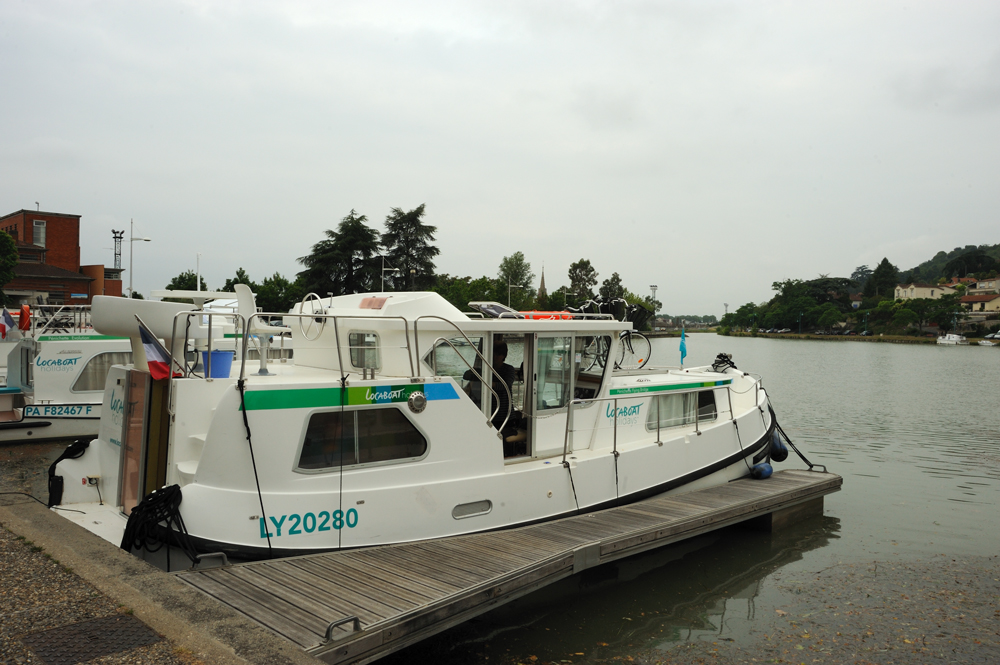
Barges can be very different in size and comfort, this company rents several types of barges for parties from 5 to 15 persons. We had a barge that can accommodate 5 persons. It has two cabins and a common room with a kitchen. The kitchen has a gas stove with an oven, a fridge and plenty of dishware for cooking and serving. Not every house has such an equipped kitchen. Even a small decanter had a place. There are two toilets with hot showers. They are pretty small, but if you have a hot shower what else do you need? There is enough water for two days without reloading.
Most organized mooring places provide the possibility to reload water and use electricity. Usually, such places with utilities cost 10-15 euros per night.
The barge has an accumulator that provides electricity for light, water heater and fridge in the absence of connection to an external source. An accumulator is charged by an engine.
The fridge doesn’t work too long without external electricity or a working engine, so after the night without electricity champagne can be slightly warm.
Internet and bikes also can be rented together with a barge.
We did the paperwork, bought local wine (the office sells some small useful stuff – detergents, repellent, water and local wine, the good one, I should say), got settled, and started to wait for the technician who would teach us how to drive a barge. In France no licence or experience is required to drive a barge, just pour out some wine and go. The same is in most European countries (Germany requires a licence).
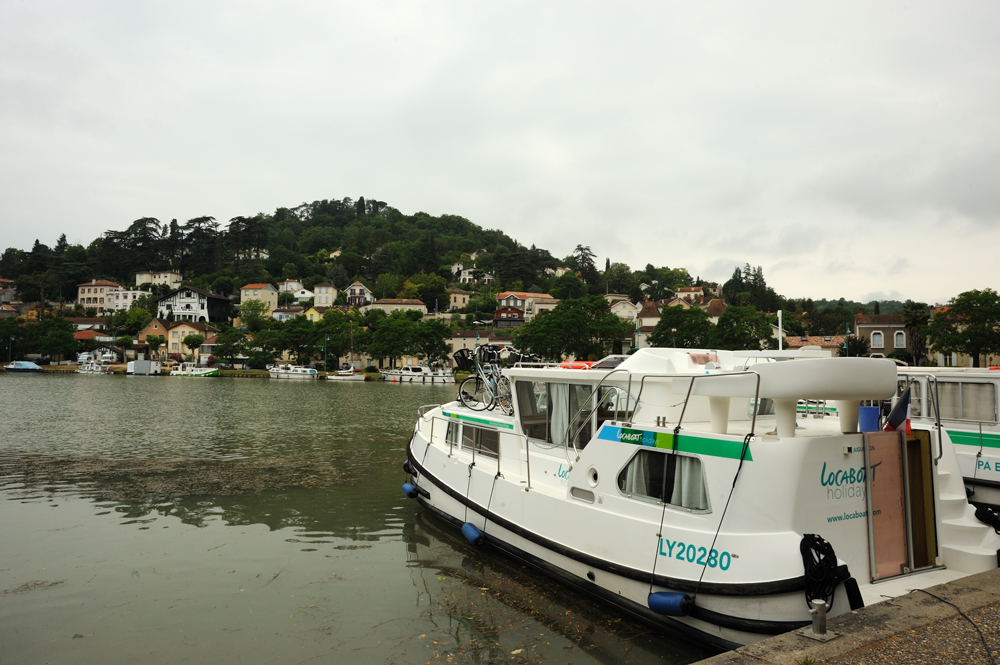
The technician came, showed me how to switch on and off everything, and I under his supervision (I was designated as a captain and a first wheelman; we also had a ship-boy and a second wheelman aka a first mate) drove the barge along the channel, turned and parked. The technician said that I am ready for self-consistent sailing and left us, dropping me thinking on which kilometre of our travel I would hit a head-on barge or ram through a lock. To avoid concentrating on bad thoughts we went to drink to have supper in the town.
I woke up early morning the next day and, while the rest of our party continued sweet sleep, made a ten km run along the channel and walked to the town for fresh croissants for breakfast.
It is a special pleasure to buy fresh croissants in the morning…
About running, by the way. Physical activity on the barge includes only wheel movement with two fingers and rope work during a mooring. Sometimes it is difficult to be so lazy. So, sports activity outside the vessel becomes necessary. There are trails along channels. Well, originally barges were moved by draughts and the trails along the channels were made specifically for them. Nowadays many such trails are transformed into bike routes. Very convenient for a morning run.
However, the enjoyment of coffee and croissants cannot continue forever, so it was time to apply my fresh knowledge of barge operation. And we hit the road.
Actually, it is not difficult to drive a barge. However, the process requires complete concentration. Unlike a car, a barge has the inertia of well-accelerated rhinoceros. You already turned a wheel far to the left, but the barge continues to move to the right. And if you would continue your left-turn steering, in one moment the barge starts to move severely left, and you should turn the wheel to the right in a hurry and panic. Finally, you with the barge start to move from one river bank to another to the horror of other persons on the water. So, the wheel should be turned very gently, not even turned, but just slightly touched. And moving in the opposite direction should be started as soon as a barge stopped to move in the previous one, not when she already started the new one. Thus, you should work very proactively. However, as soon as the rule is understood, it becomes pretty easy. If on the first day, I drove the barge as a drunken sailor, on the second day everything became perfect.
For precise manipulations in locks and during mooring, these barges have water jets. They work from the accumulator and need time to recharge, so it is impossible to use them often, but they are very helpful in locks.
The locks and other fun started immediately at the beginning of our trip.
The map of our first day.

Just behind Agen, the channel goes over Garonne by a very long aqueduct. Four locks follow the aqueduct.
Only one boat at a time can pass the aqueduct and the locks (in opposite directions). The traffic regulation is automatic. There are cables across the channel just before the locks and aqueducts. And traffic lights. The rope hangs from the cable. Pull the rope and wait. The traffic light lets you know if can you go right now or should wait for a boat from the opposite direction.
The aqueduct and the four locks behind it work together from one rope. We pulled the rope, allowed it to pass the head-on barge, and moved.
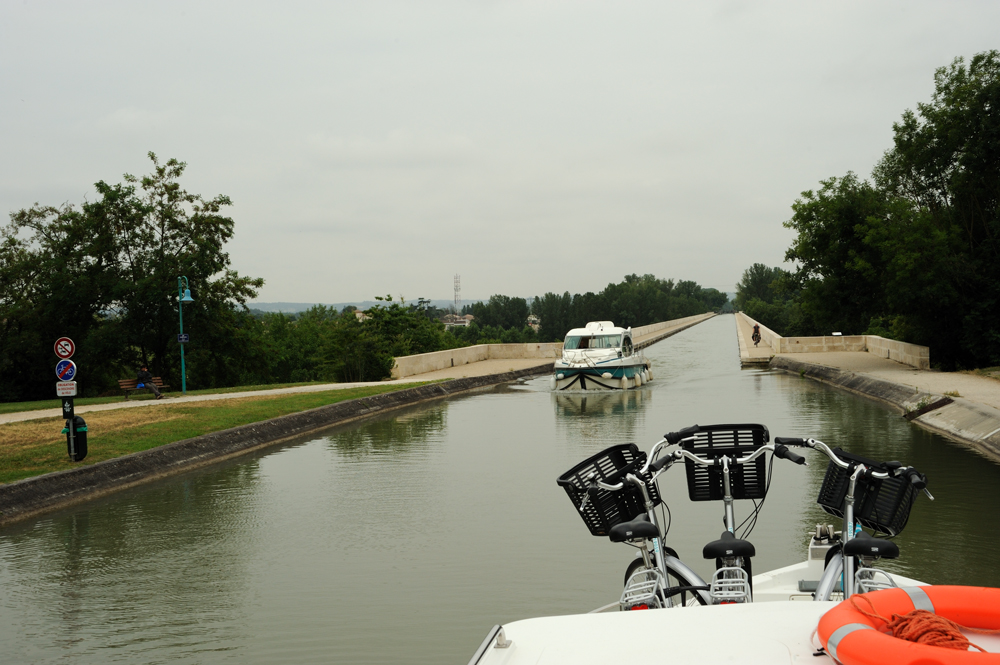
It is so funny to sail on the bridge.
Garonne is below us.
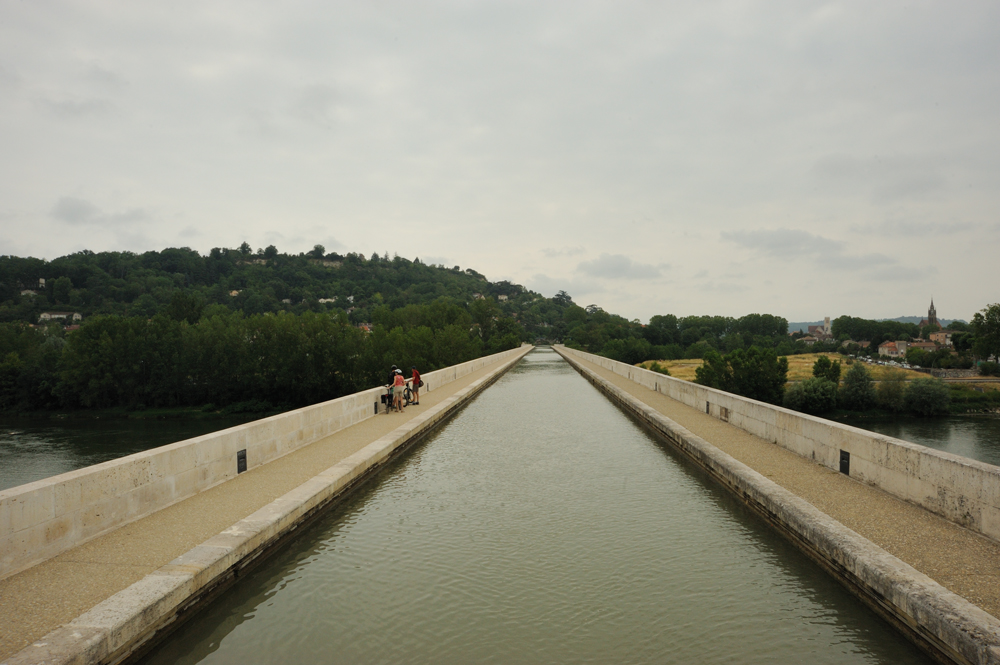
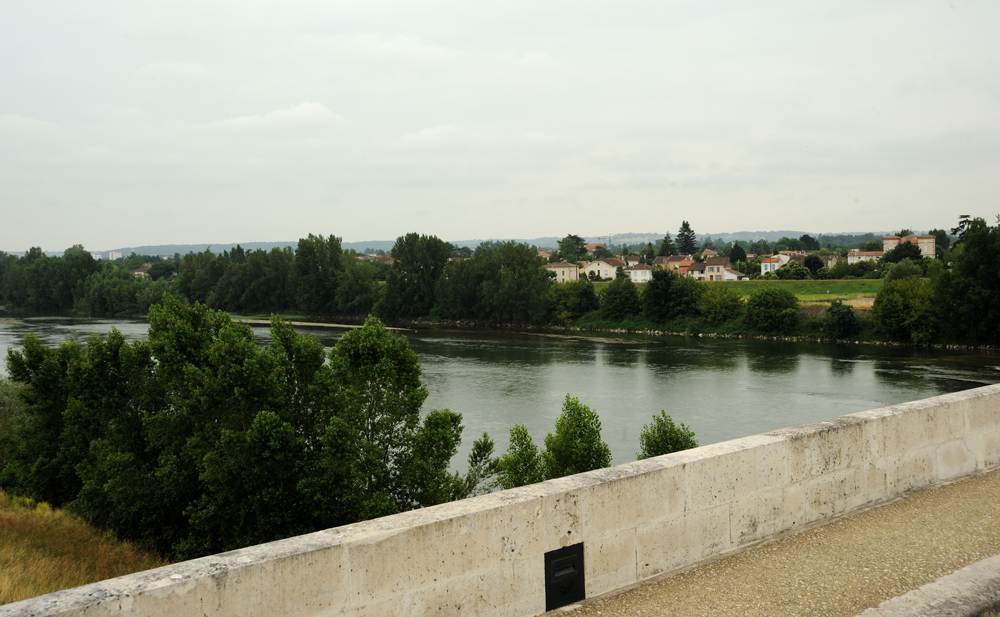
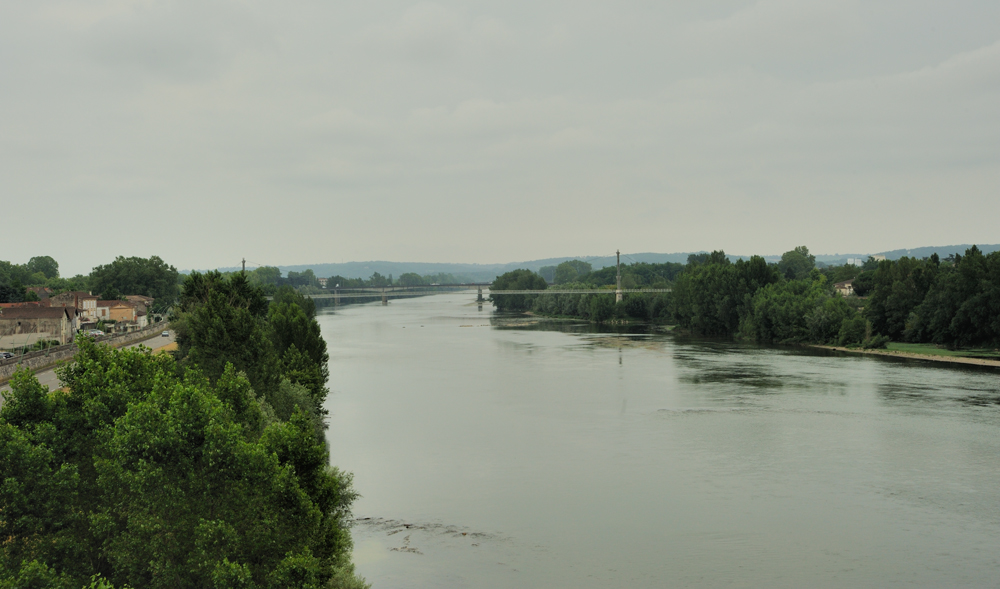
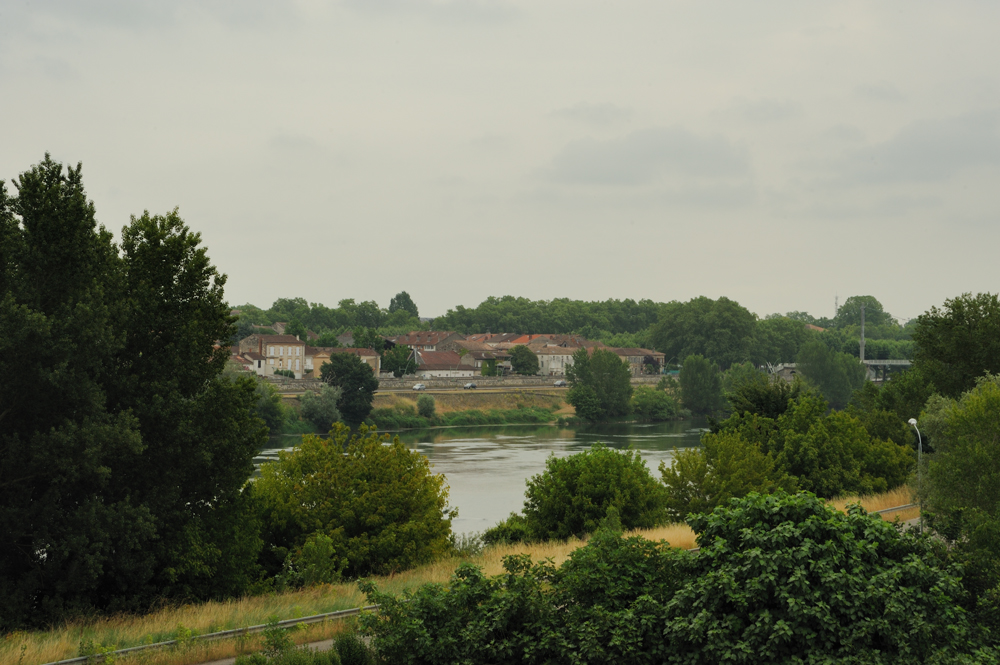
Agen borders.
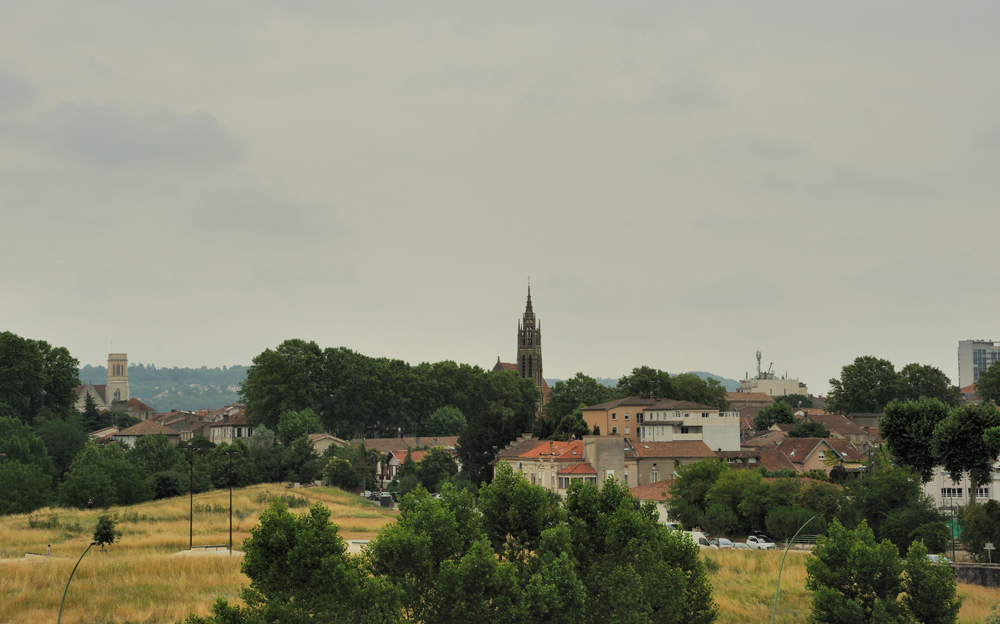
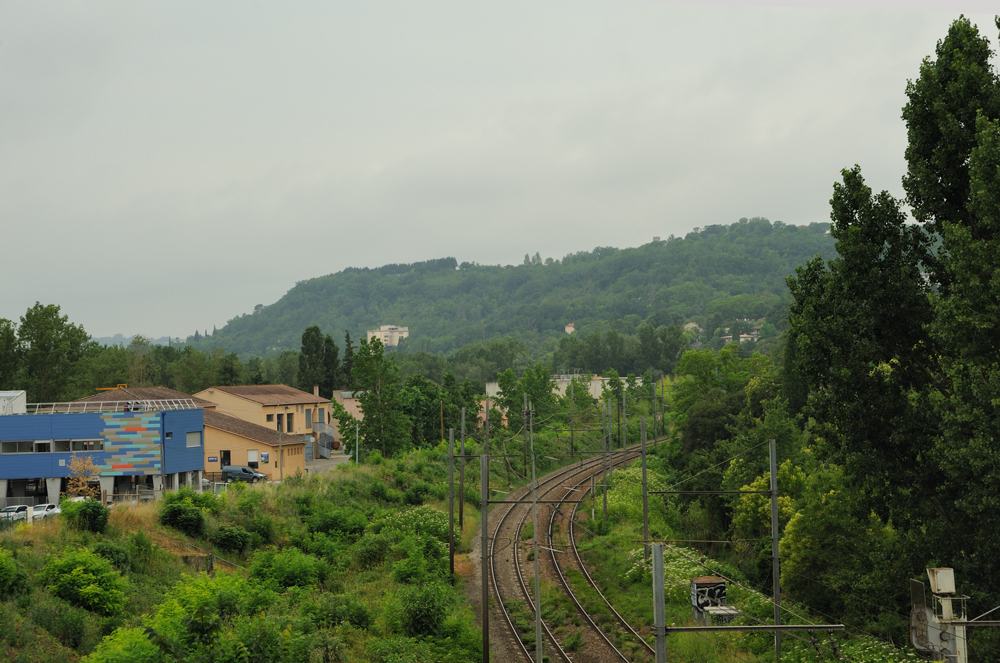
The aqueduct comes directly to the first lock.
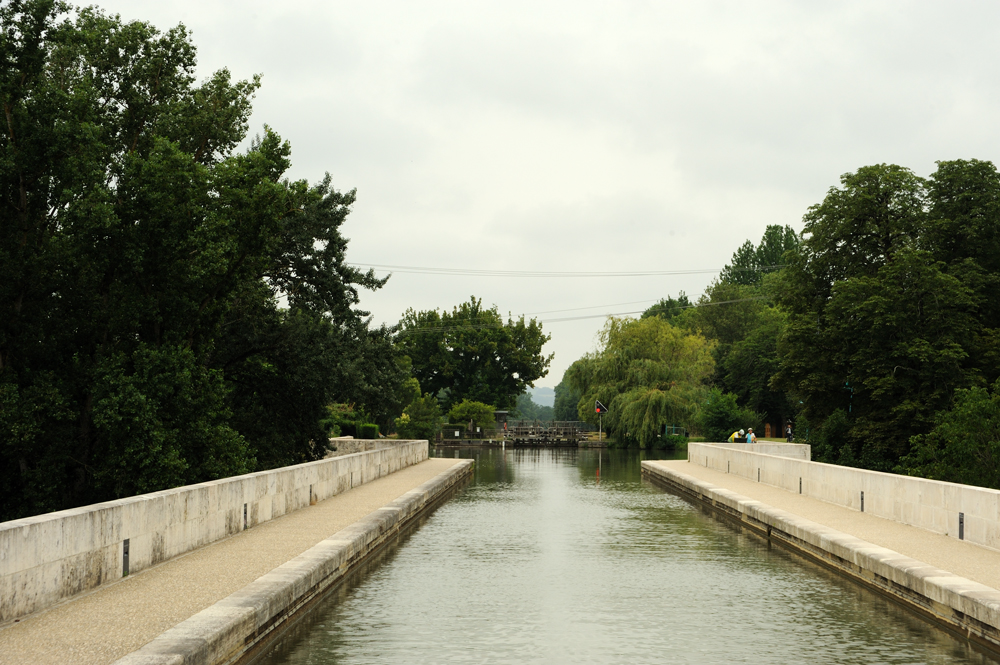
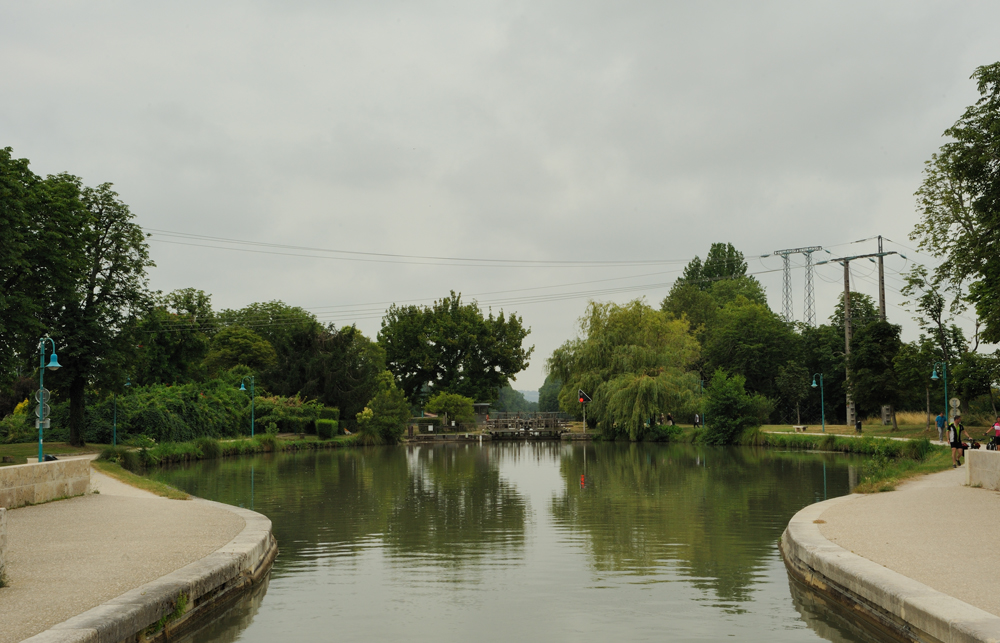
The traffic light shows red.
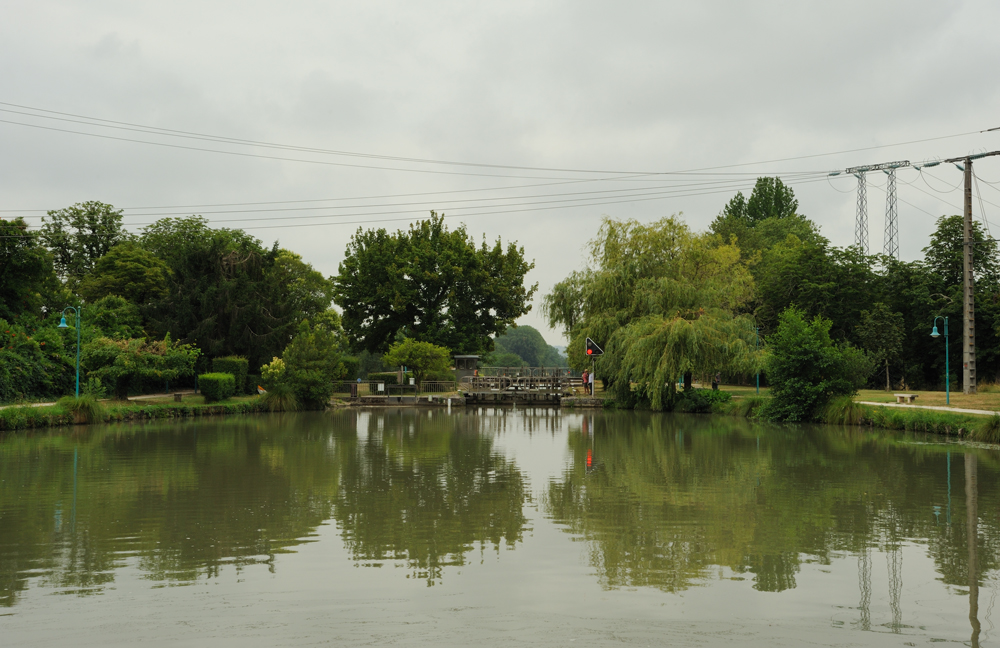
At this time I was replaced by the second wheelman and started to work as a locked person.
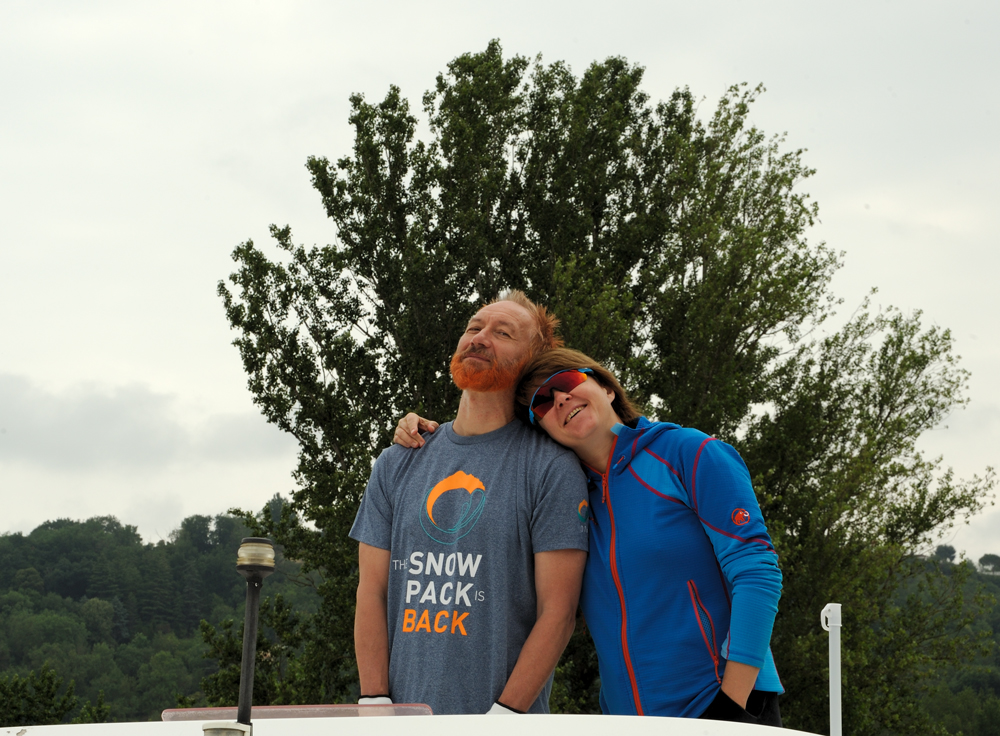
Channel locks are regulated in the following way: push a button and the door will be open. There is a booth on the lock. One of the crew members goes to this booth and when the traffic light shows green, press the big green button that initiates the lock work. The same person ropes the barge to the lock pin. Because of this, the rent company requires to have at least two persons on the boat.
The head-on boat passes the lock.
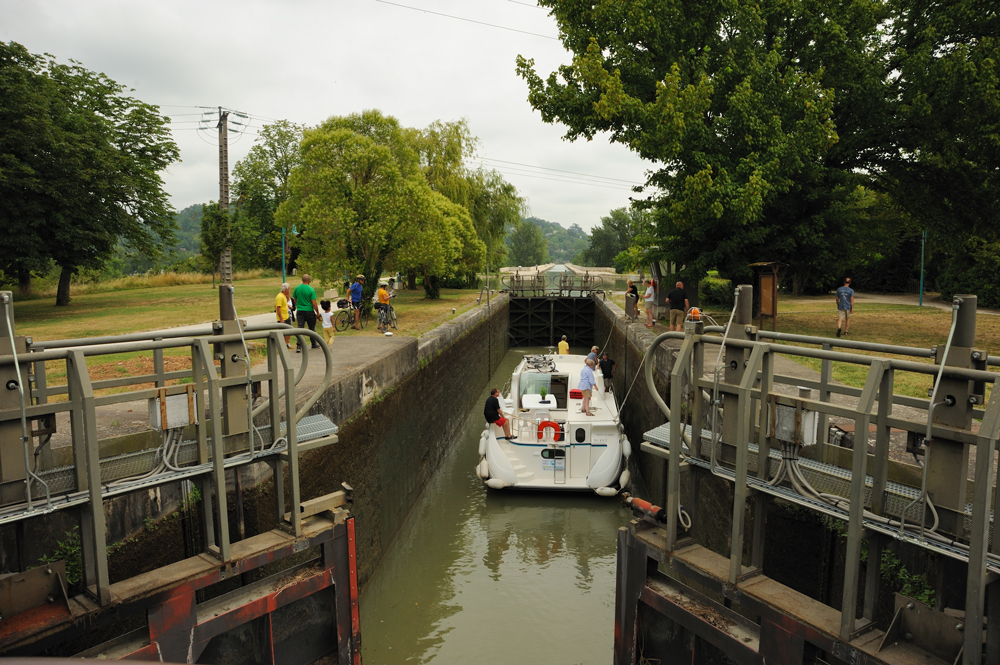
Here we were stacked. Already several barges came from the opposite direction, but the light for us was still red.
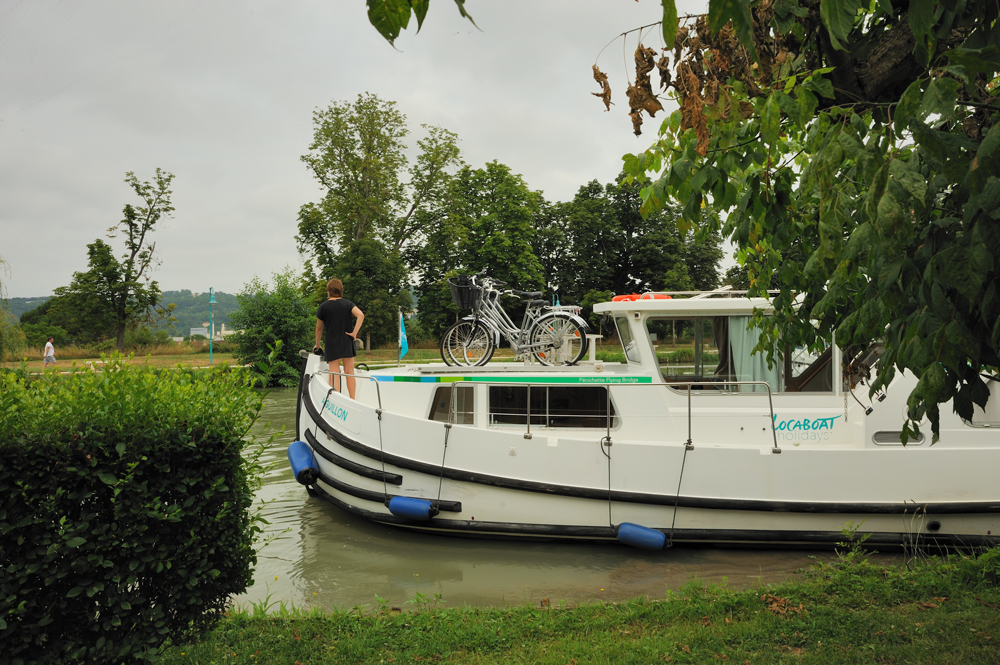
In the booth, we found another, red, button. This button allows talking with the lock service. The guy came, said that the automatic often fails, applied his screw, and opened the lock for us.
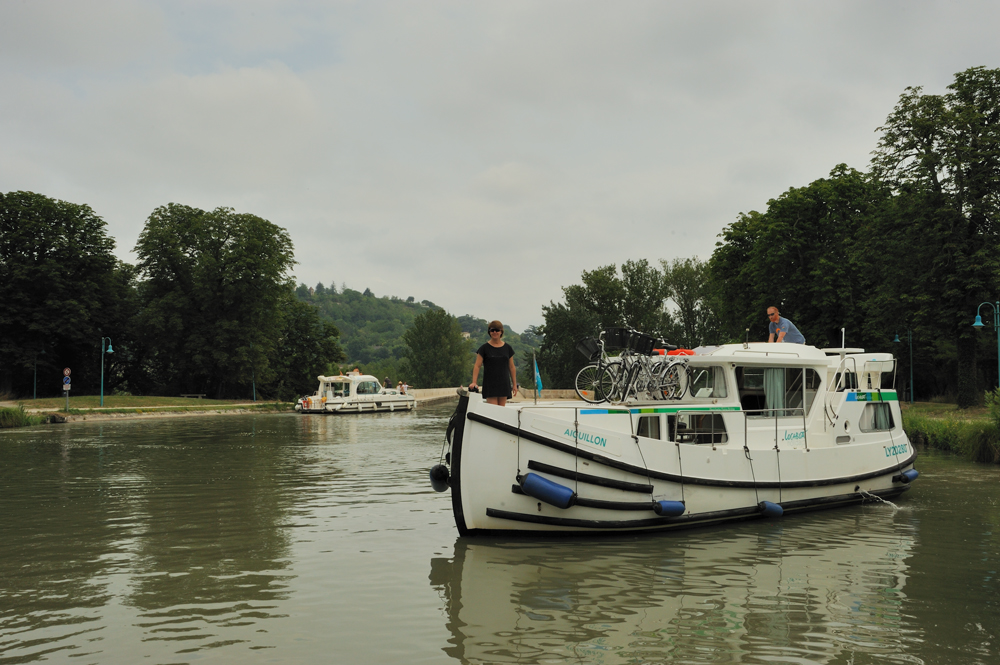
Entering the lock.
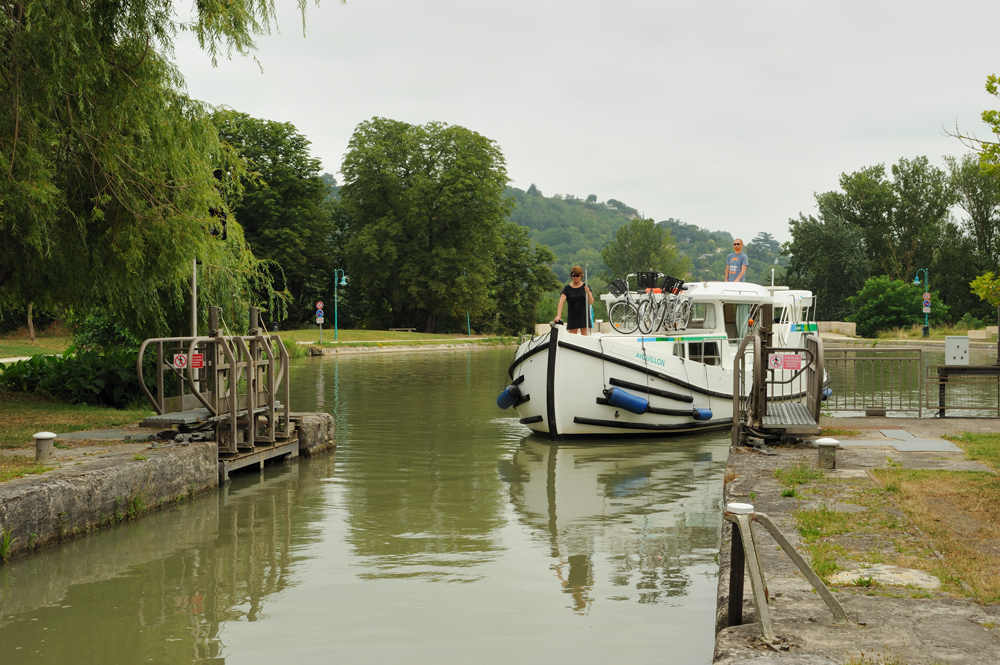
Ship-boy with a hook.
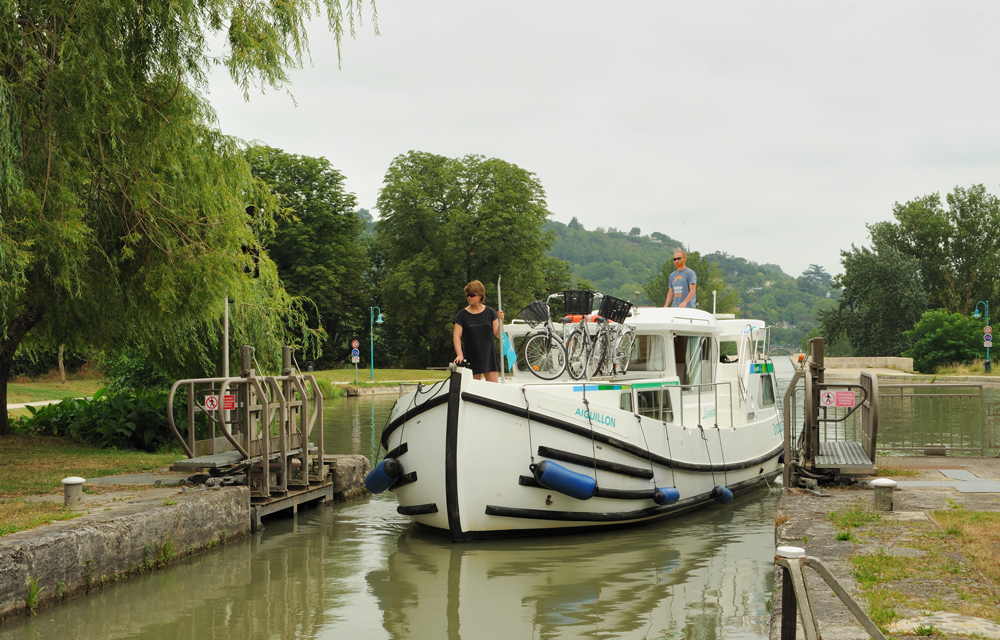
Now we need to rope the barge and wait till the water came into (or out, if you move in the opposite direction) the lock.
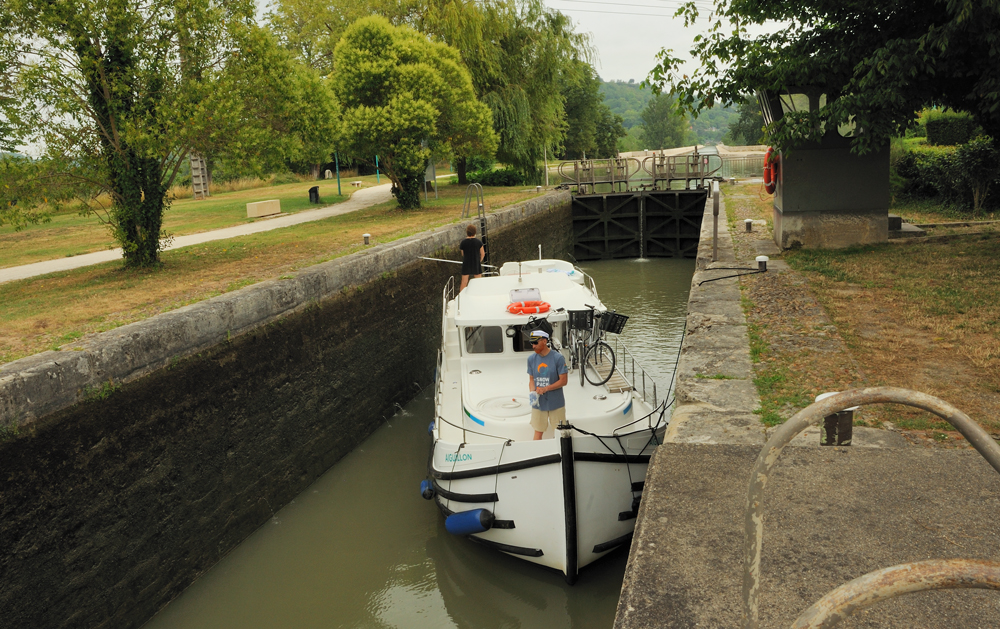
The first lock is passed, and we follow the second one. I, as a locked person, use the bank.
The barge speed limit on the channel is 8 km/h, on the river – 6 km/h, and in the locks – 3 km/h. Very meditative way to travel.
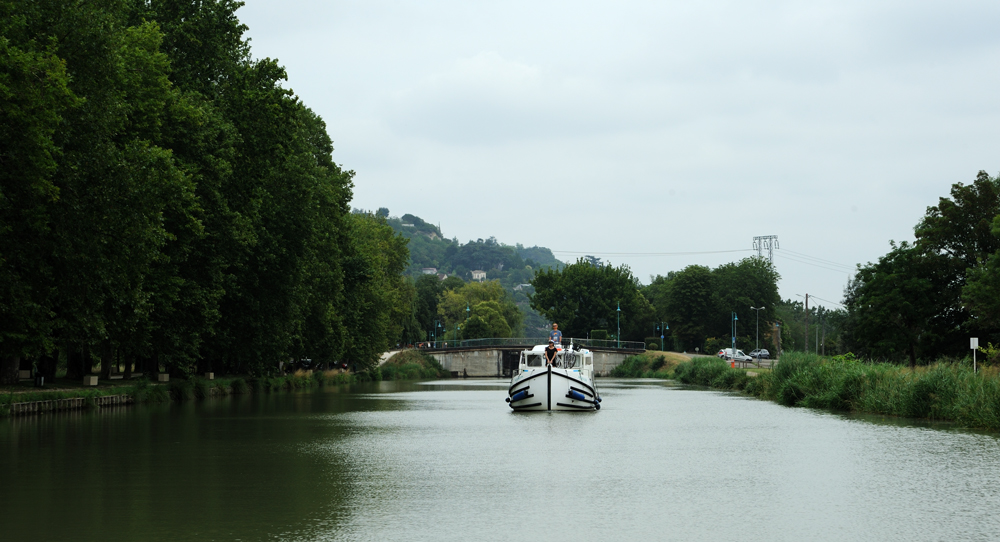
Our shipboy got a new job as a head figure.
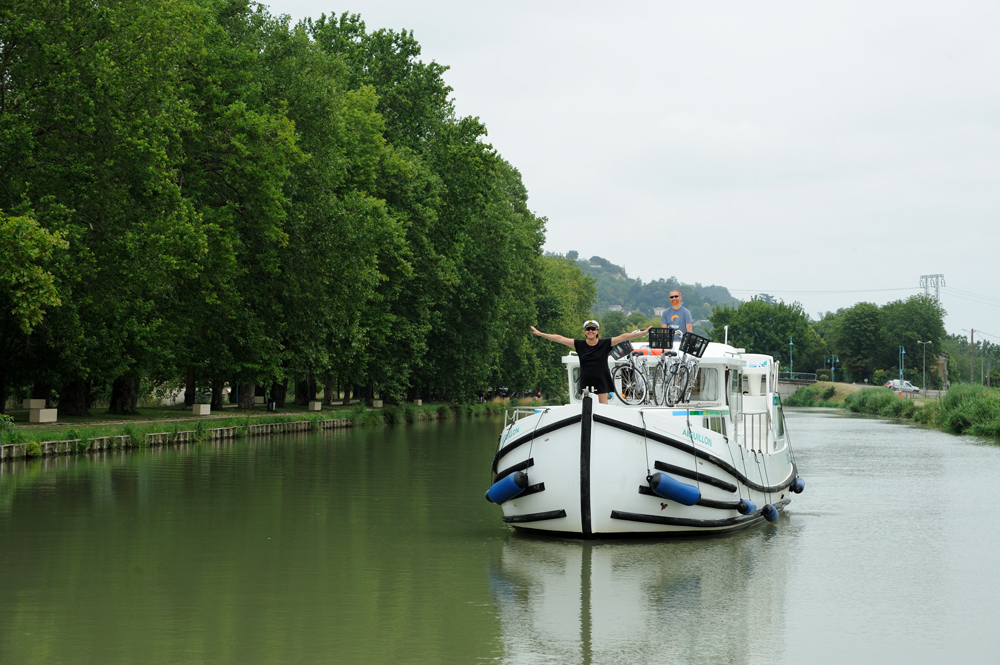
After we polished up our lock-passing skills.
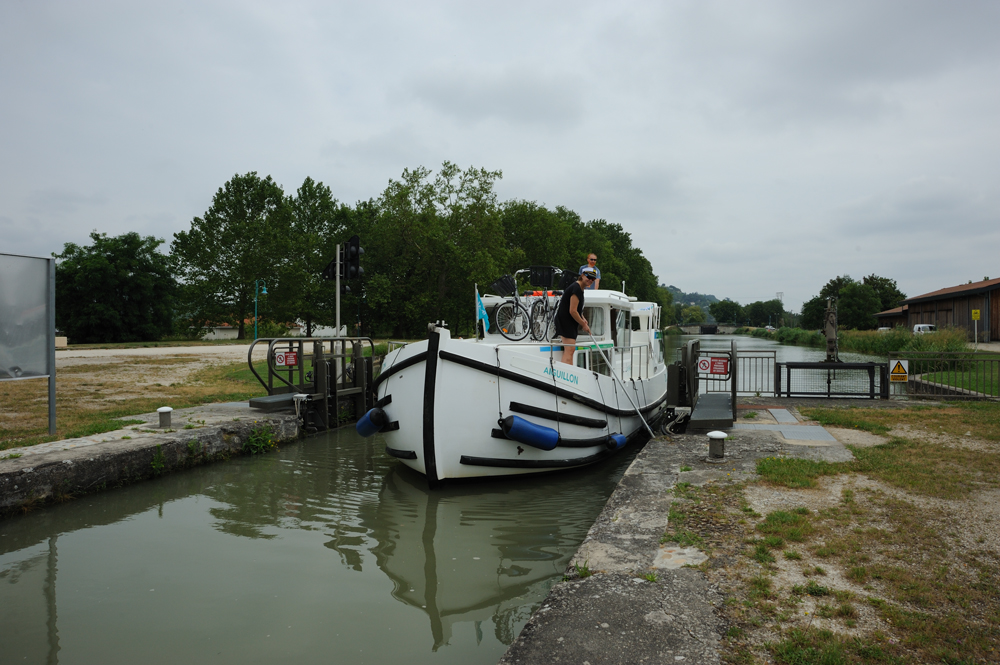
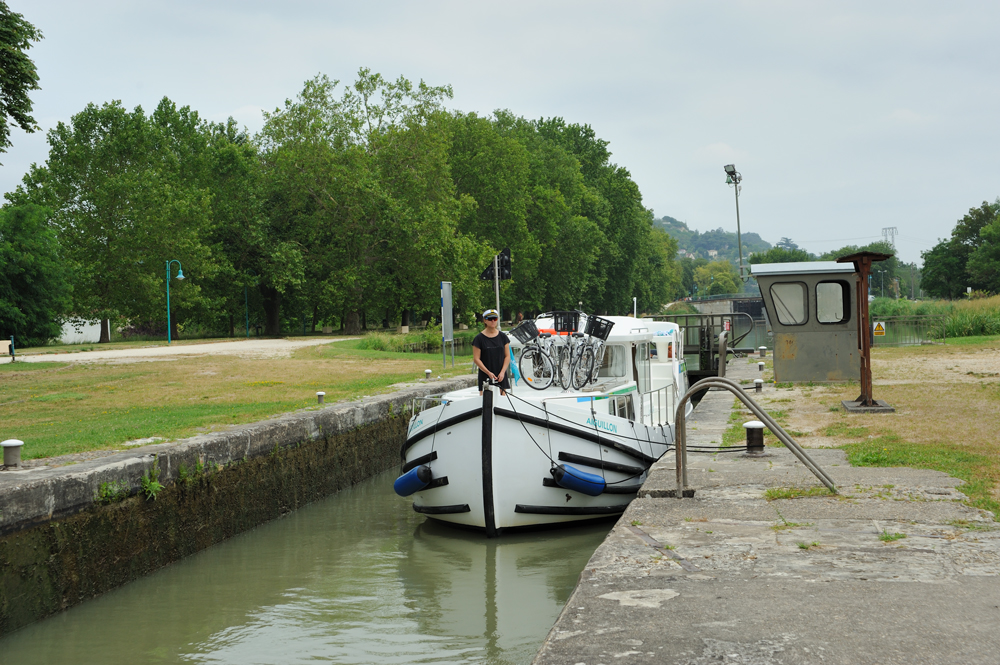
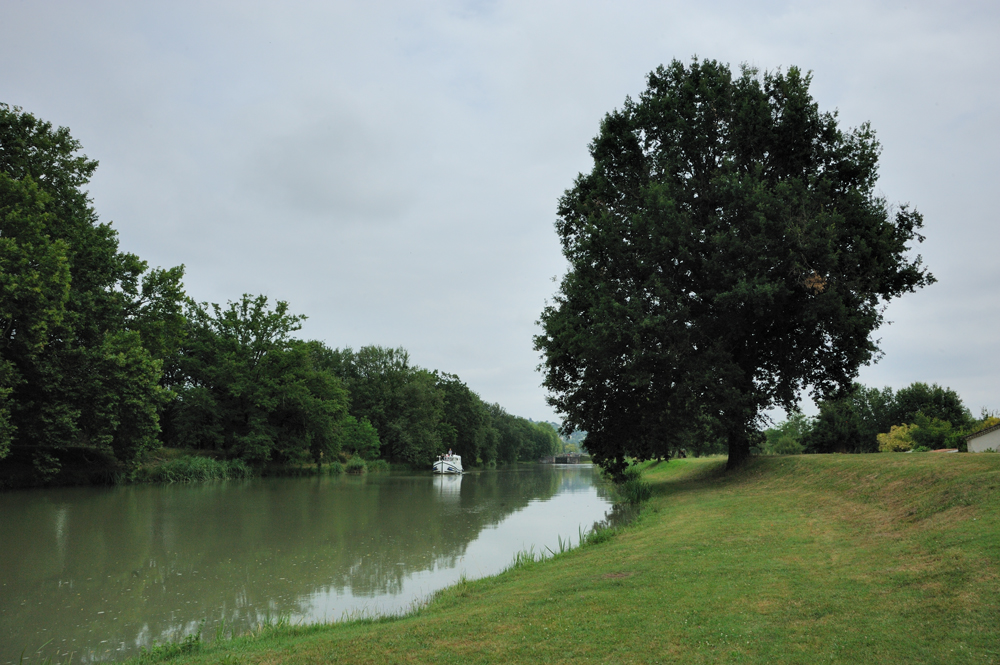
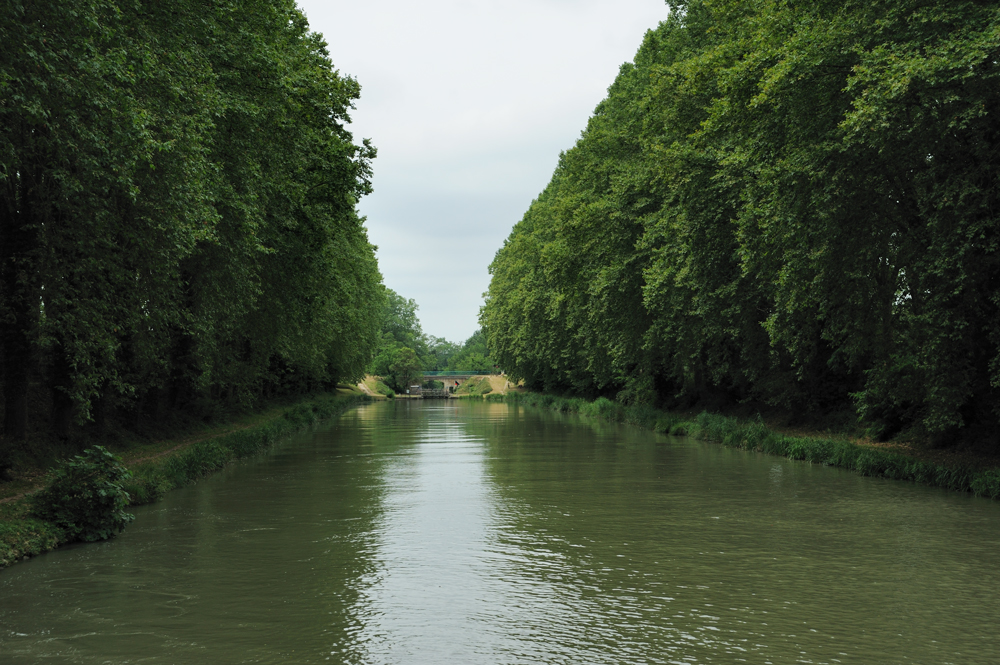

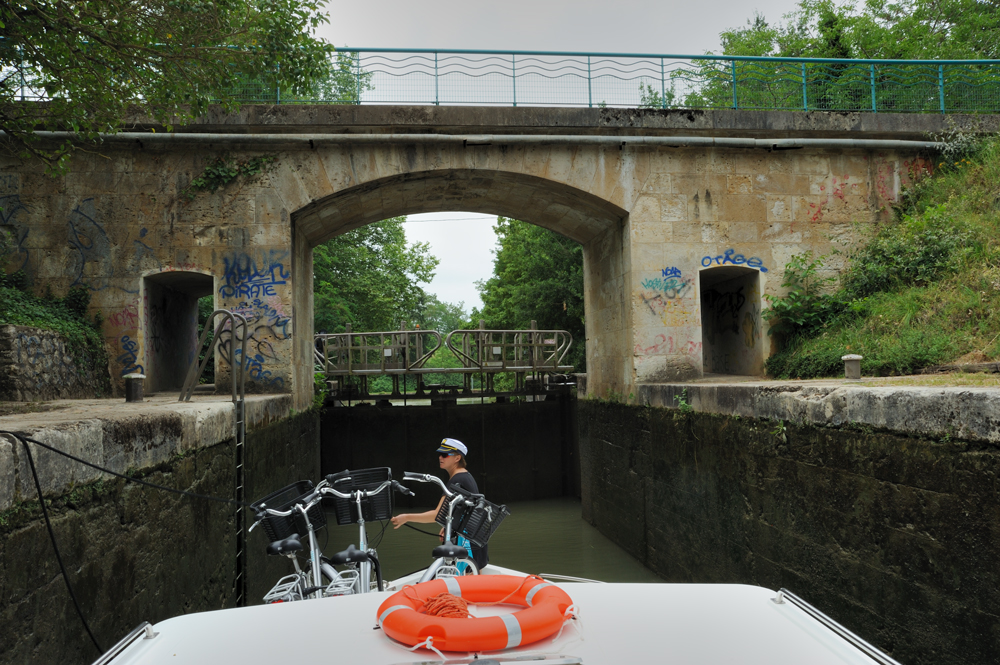
The nature life of French channels, I should say, are very rich. They are full of fish. And fishermen. The boats must avoid the fisherman lines. Still, they don’t like boats. In addition to humans, plenty of herons and kingfishers hunt for fish. There are also many dragonflies, frogs, doves, and other animals in and around the channels.
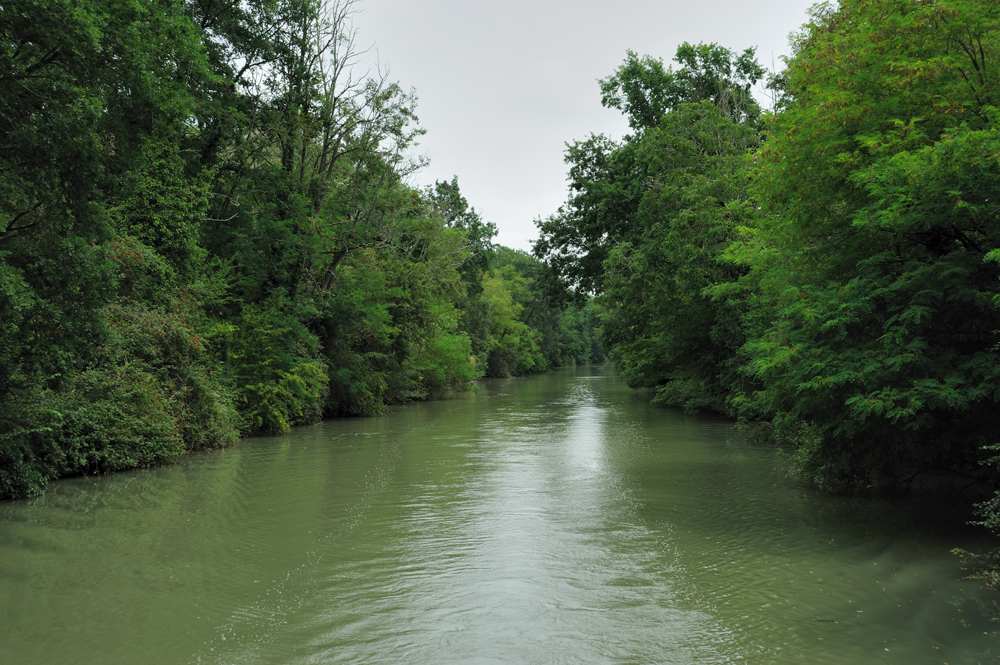
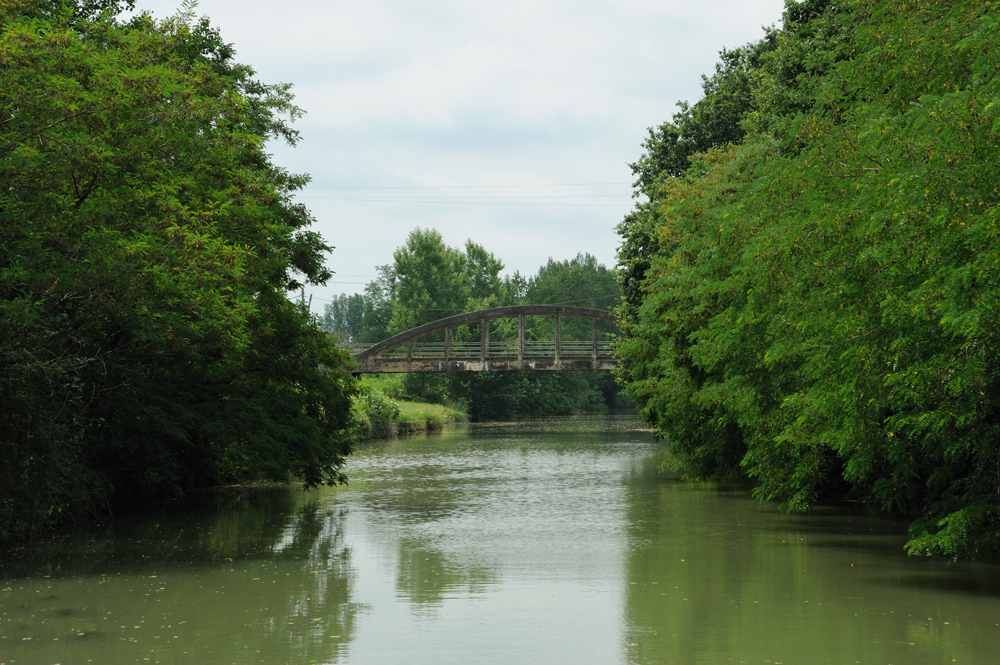
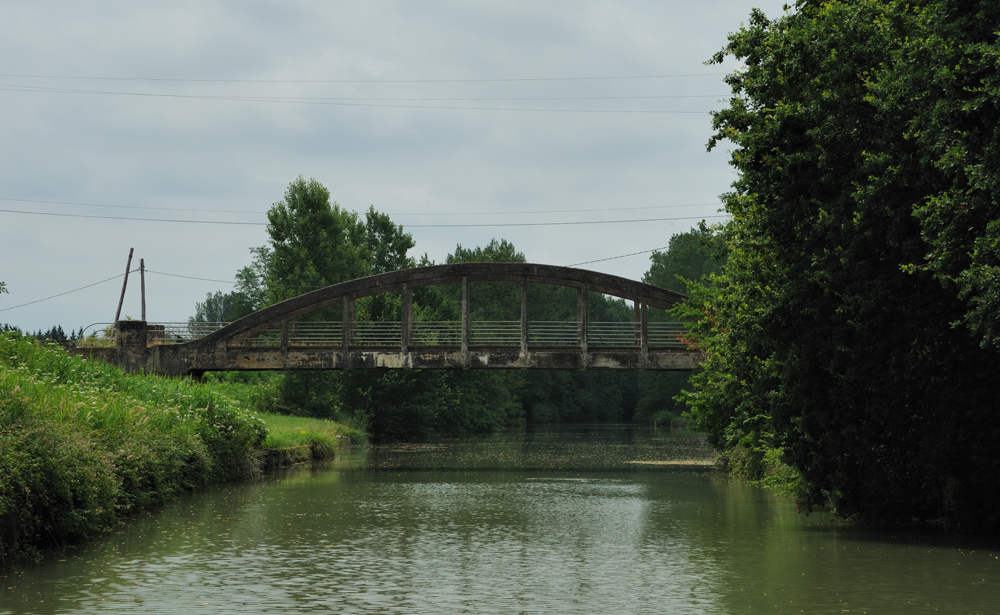
We finished our first day on the water in the Serignac-sur-Garonne.
To be continued….